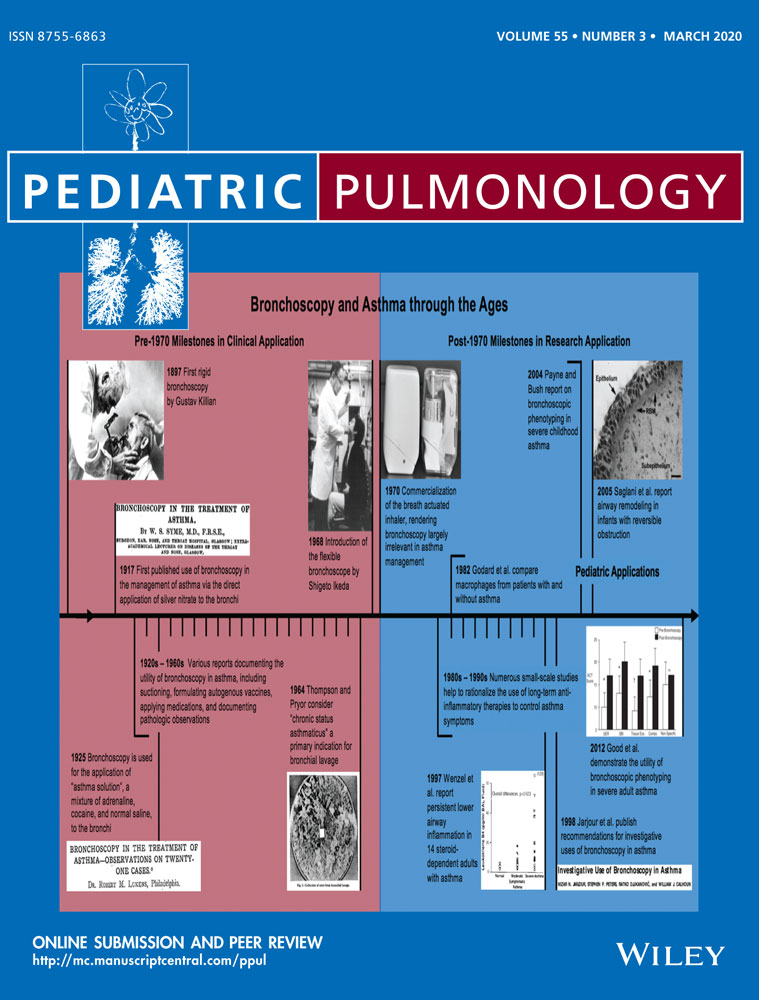Clinical and structural aspects of tracheal stenosis and a novel embryological hypothesis of left pulmonary artery sling
Abstract
Objectives
To identify the imaging features peculiar to congenital tracheal stenosis (CTS) complicated with left pulmonary artery sling (LPAS) with the aim of presenting a hypothesis of tracheal stenosis embryology in LPAS.
Methods
We retrospectively reviewed CTS patients (with complete cartilaginous rings) admitted between April 2010 and July 2018. All the patients were classified into the LPAS or non-LPAS group, and their clinical characteristics and qualitative variables on computed tomography (CT) imaging were compared.
Results
Of the 72 patients enrolled, 61 had bilateral lungs. Among the bilateral lung patients, 26 (43%) had LPAS. The tracheal bifurcation was significantly deeper, the stenotic region was longer, and the bronchial angle (especially in the right) was wider, in the LPAS group. The cut-off values for the thoracic vertebral level at the tracheal bifurcation (>4.8), subcarinal angle (>118.1), and right bronchial angle (>61.9) were useful for diagnosing suspected cases of LPAS. In the time-dependent course, LPAS complicated with a congenital heart defect was a statistically significant risk factor of respiratory symptoms (hazard ratio, 3.01; 95% confidence interval, 1.23-7.37; P = .02).
Conclusions
The CT findings described here should immediately raise suspicion of LPAS on chest X-ray and also suggest tracheal “squeezing and milking” by the surrounding vessels in the embryo. Patients with LPAS complicated with a heart defect should be followed carefully to determine the optimal timing of intervention.
CONFLICT OF INTERESTS
The authors declare that there are no conflict of interests.




